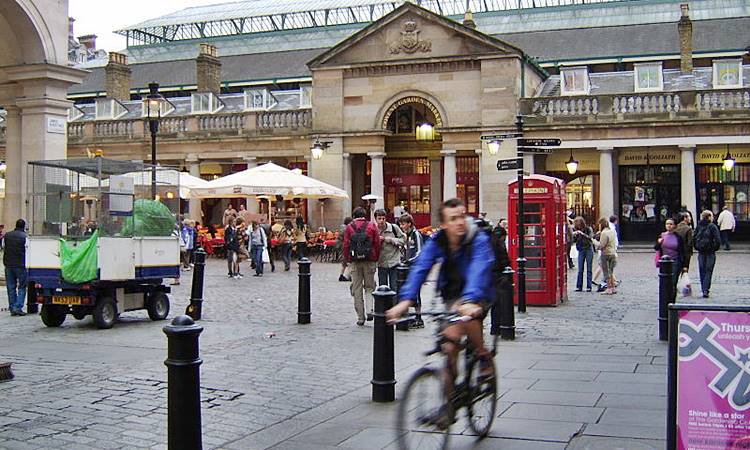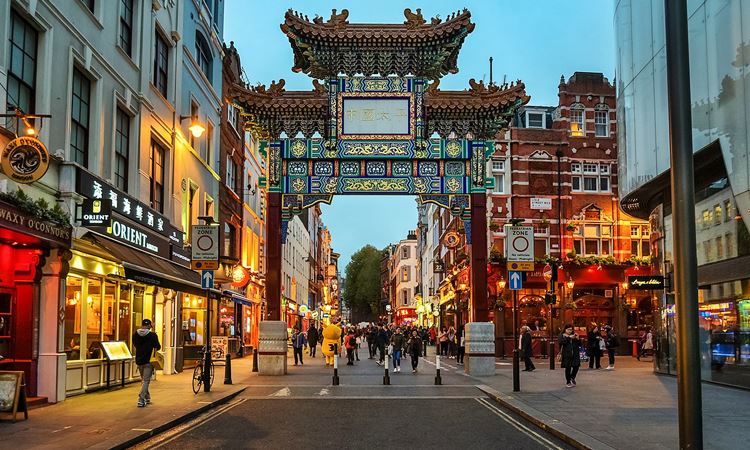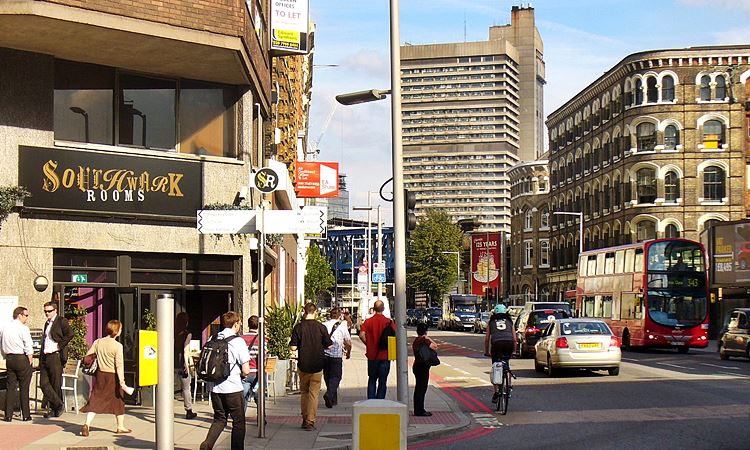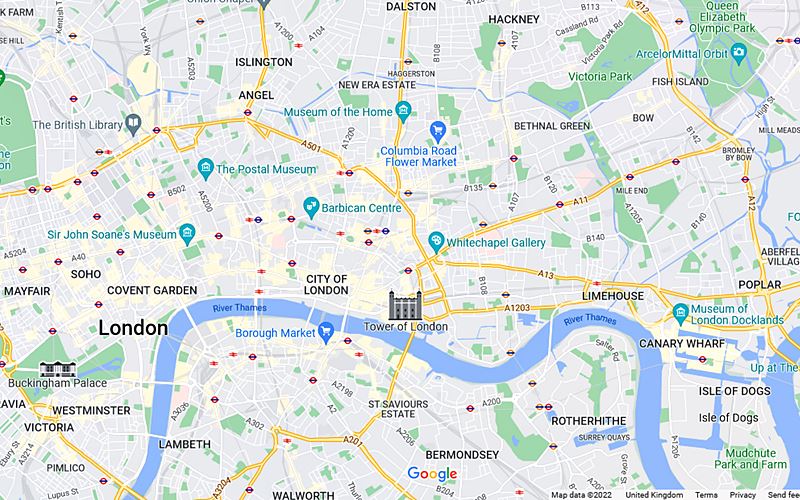Some links on this page are affiliate links. They may generate revenue for this site but there’s no extra cost to you if you make a purchase. More on affiliate links
The 7 best areas of London for visitors to explore and stay
London is much more diverse than most people realise. This sprawling city is home to countless neighbourhoods and each is unique with a personality of its own. They are spread across the city but you can always depend on public transport and maybe the occasional taxi to visit.
Thinking about which are the coolest neighbourhoods in London to visit? As a matter of fact, there are so many but you’d want to visit the most memorable. So these are the 7 top picks of the best neighbourhoods. They are located in the city’s central area and are easy to get around and explore on foot.
These 7 picks are also some of the best neighbourhoods to stay in London, especially if it’s a first visit to the city. Staying in these locations, you’re conveniently close to many tourist attractions. Besides, you’re often within walking distance from an Underground station for public transportation.
YOU MAY ALSO LIKE
- Top Attractions in Central London
- Famous Shopping Streets in London
- Explore Famous Markets in London
- MORE ON LONDON
City of London

- Location: Western corner of Central London (north of the River Thames)
- Tube stations: Bank (Central, Northern and Waterloo & City Lines), Mansion House (Circle and District Lines), St Paul’s (Central Line)
The City of London is the oldest part of London, once the Roman capital of Londinium founded 2,000 years ago. Don’t confuse the “City of London” with the “city of London”. The City of London is an independent part of London with its own mayor, local government and even a police force. To sum it up, it’s a city within a city.
The City is also known as the Square Mile because of its size. And one of the world’s leading centre for international finance, home to over 500 financial institutions from around the world. Only 10,000 people live here but over 500,000 come to work. It’s a hive of people and activities on weekdays but relaxed on weekends.
Coming here is not just about big money and smart business suits. Being the oldest part of London, there’s also history and heritage. It’s a mixed scene of modern buildings blending with historic architecture. Not to mention the twist of narrow lanes, alleyways and secret courtyards built centuries ago.
The City’s most famous icon is the 18th-century St Paul’s Cathedral. This stunning Anglican church is a masterpiece of Baroque architecture by Sir Christopher Wren. Another famous site is Guildhall, a medieval building that looks like a cathedral and now houses the City’s local government.

The Monument is a 62 metres (202 feet) tall Doric column built in the 17th century. The spot marks the start of the Great Fire of London in 1666. After a few photos, walk up 311 steps for views of London. The Roman Walls once protected the City and the best place to see these ancient remains is near Tower Hill Underground Station.
Leadenhall Market is a beautiful Victorian market. Under the ornate glass roof are classy boutiques, specialist food stores and swanky restaurants. The Royal Exchange is a striking 19th-century neo-classical building based on the Pantheon in Rome. The interior is grand and ornate, occupied by luxury shops, classy restaurants and bars.
There are a couple of interesting museums and are free to visit. The Museum of London explores 2,000 years of London. The Bank of England Museum tells the bank’s history and money in the UK. And there’s the London Mithraeum, home to over 600 artefacts dug from the ancient Roman Temple of Mithras discovered in the City.
The Gherkin towers at 180 metres (591 feet) and looks like a giant pickle! The only way to view from the top is to pay the price for fine dining on the 39th floor. But there’s an alternative that won’t cost you a penny. You can book a free ticket to the Sky Garden on the 42nd floor of the “Walkie Talkie” building on Fenchurch Street.
Covent Garden

- Location: London’s West End
- Tube stations: Covent Garden (Piccadilly Line), Leicester Square (Northern and Piccadilly Lines)
Covent Garden is vibrant and full of life any time of the year. The focal point is the Piazza (an open square) surrounded by centuries-old buildings, courtyards and narrow cobbled streets. This is a great neighbourhood in London to walk around and explore. It’s pedestrian-only and everything is within walking distance.
Restaurants, cafes, bars, shops, covered markets, theatres and museums pack Covent Garden. Shopping here is a mix of high street retailers, small independent shops and the occasional bizarre outlets. It’s also a food paradise whether for a quick bite or fine dining. For al fresco, the Piazza area is the best place.
The Apple Market is a bustling covered market packed with small shops and stalls. You’ll find loads of handmade jewellery, arts, handicrafts and clothes. And Mondays are special days for antiques and collectables. Nearby is Jubilee Market, offering souvenirs to household items. Weekends here are special days for arts and crafts.
The London Transport Museum is housed in a Victorian iron and glass building. If you don’t mind the entry fee, the museum takes you on an absorbing journey about the history of transport in London. Discover buses, trolley buses, trams and trains from years gone by. There’s even an underground steam train once used by the city.

Convent Garden is part of the West End theatre district, renowned for top-class shows that are on par with the Broadway theatres in New York City. The most prestigious is the Royal Opera House, home of the Royal Opera and Royal Ballet. If you don’t plan to see a performance, you can still book a tour of the stunning opera house.
Enjoy street entertainment which has been going on since the 17th century. You’ll find many of these talented street performers near the Piazza. There are all kinds of shows including music, juggling, acrobat and pantomime. Always a great performance and free to watch, but you could drop a few coins.
You can easily miss Neal’s Yard, a small alley tucked in a small corner – almost hidden from sight – between Shorts Gardens and Monmouth Street. This charming alley is certainly worth a visit. Lining both sides are old brick buildings in pretty colours. Inside are gems of small shops, homely restaurants and health food cafes.
Soho

- Location: London’s West End
- Tube stations: Oxford Circus (Bakerloo, Central and Victoria Lines), Piccadilly Circus (Bakerloo and Piccadilly Lines)
Soho is a small tightly packed neighbourhood in London near Covent Garden. There are no iconic landmarks, historic sites or interesting architecture here. Having said that, it’s one of the most happening places in London. Soho is entertaining, buzzing and certainly splashy. Besides, it’s unconventional with a Bohemian character.
There’s no official definition of where Soho starts and ends. But most will agree it’s within Oxford Street (north), Regent Street (west), Shaftesbury Avenue (south) and Charing Cross Road (east). Within is a twist of narrow streets and alleys. For the most part, it’s pedestrian-only and an easy neighbourhood in London to walk around.
Soho is bursting with entertainment. There are jazz clubs, comedy clubs, cabarets and theatres. Many are open till midnight and some way after the hour on weekends. Check out Ronnie Scott, a famous jazz club that’s been around since the 1960s. Prince Edward and Sondheim are two West End theatres famous for their musicals.
Carnaby Street (to a lesser extent the nearby streets) is Soho’s most famous shopping destination. In the 1960s, it was home of the mod and hippie fashion. Now it’s mainstream but still popular with the younger generation and budget-minded. You’ll find mostly independent boutiques and a place to shop for British heritage labels.

There’s more shopping in Soho. Running east-west bordering Soho’s northern limits is Oxford Street, the busiest shopping street in London and home to leading retailers like TK Maxx, Zara and JD Sports. Running north-south bordering Soho’s western limits is Regent Street, home to high street stores and designer boutiques from the top brands.
Soho is also a great dining destination. There are endless choices from British classics to ethnic cuisines. Old Crompton Street and Brewer Street offer some of the finest restaurants. Kingly Court is a 3-floor food hub with over 20 restaurants. The food here is first-rate and value for money. Besides, you can enjoy dining in the airy courtyard.
Berwick Street passes through the heart of Soho. It’s a short stretch occupied by trendy shops and delightful restaurants. There’s also the Berwick Street Market, a popular street food market with some 20 stalls offering tasty cheap eats. You’ll find a great variety including falafel, burritos, wraps, curry and paella to name a few.
Soho Square Gardens is a small but delightful oasis tucked away on the northeast edge of Soho. It’s largely paved with lawns at the 4 corners. And in the centre is a half-timbered black and white mock Tudor building built in 1895. For many, the square makes a nice spot to sit and chill out after touring Soho’s hives of activities.
Chinatown

- Location: London’s West End
- Tube station: Leicester Square (Northern and Piccadilly Lines)
There are several Chinatowns in the UK but the one in London is certainly the largest. This small East Asian enclave is across Shaftesbury Avenue from Soho, centring on Gerrard Street. Chinatown is popular with both locals and tourists. It’s a vibrant and pretty part of London, famous for its Asian shops and restaurants.
The history of Chinatown goes back to the 1950s. Back then Chinese migrants from Hong Kong began to settle on Gerrard Street, initially attracted by cheap rents. Many opened shops, restaurants and small businesses. It was part of Soho in the 1950s but by the 1970s developed into an enclave with an East Asian character.
Enter the enclave through any of the four traditional Chinese gates. But the gate on Wardour Street is the largest and grandest of them all. To add a little further, this intricately designed gate is the largest Chinese gate in the UK. The design is from the imperial Qing dynasty. A snapshot here makes a great memento of a visit to Chinatown.
Pass the Chinese gates and you’ll discover an Asian neighbourhood in the heart of London. It’s a world apart and hard to believe you’re in a city in the UK. Street signs and signboards are prominently in Chinese besides English. Also look out for the lion statues, coloured lanterns and other traditional symbols.

Chinatown is a throng of Asian businesses. There are shops selling food items found only in Asia. There are also shops offering ancient healing practices like herbal medicines and foot reflexology. Tasty Chinese buns will tempt your curiosity. And if you’re looking for souvenirs, Chinese paper lanterns are very popular.
Over 80 restaurants pack this tiny enclave. From cheap eats to fine dining, you’ll be spoilt with tasty choices. Most Chinese restaurants specialise in Cantonese or spicy Szechuan foods. Dim sum is also a favourite. Besides, there is a sprinkle of restaurants devoted to other Asian cuisines such as Korean, Japanese and Thai.
It’s a great time to be in Chinatown during the Chinese New Year – January or February according to the lunar calendar. Hundreds of red paper lanterns hang across Gerrard Street. During the celebration, there’s a parade and a spectacular Chinese lion dance. What’s more, there are free cultural shows and tasty Asian street foods to feast on.
Southwark

- Location: Western corner of Central London (south of the River Thames)
- Tube stations: London Bridge (Jubilee and Northern Lines), Borough (Northern Line), Southwark (Jubilee Line)
Southwark is one of the oldest parts of London, first established by the Romans. The neighbourhood is directly south across the River Thames from the City of London. If fact, you can easily walk from the City to Southwark by crossing London Bridge, Southwark Bridge or the pedestrian-only Millennium Bridge.
Light industries, docks and warehouses once occupied Southwark. The area has now given way to offices, residences and hosts of shops and restaurants. Not only that, several of London’s top attractions are right here in Southwark. It’s also a nice location for visitors to stay from cheap hostel beds to hotels for every budget.
Borough Market is the city’s largest and oldest food market, going back to the 13th century. It’s not only Londoners who come here but also curious tourists. The market is a winding passage filled with over 100 stalls. The focus is quality and not surprising that the foods here often find their way to some of the finest restaurants.
Shakespeare’s Globe is an inspiring replica of the original 16th-century Globe Theatre – it’s near the original site. Performances include Shakespearean and non-Shakespeare plays. Guided tours are also available to learn the history of the original theatre. If you have the London Pass or Explorer Pass, you can include the theatre for the tour.

Tate Modern is a short walk from Shakespeare’s Globe. This renowned art gallery is home to some of the world’s largest collections of modern art – free admission. And it’s a wonderful display from the 20th century to the present. Famous artists with their works here include Pablo Picasso, Henri Matisse, Salvador Dali and Andy Warhol.
The Shard at 310 metres (1,016 ft) is the tallest in the UK. It’s spire-like and cladded with 11,000 glass panels! Offices, residences, restaurants and a hotel occupy this city icon. You can book an entry ticket or use the London Pass or Explorer Pass to the 68th and 69th floors as well as the Skydeck on the 72nd floor for amazing views.
Take a stroll on the promenade along the River Thames. It’s a scenic walk with lovely views of the City of London across the river. There are restaurants and cafés on the promenade to chill out and enjoy the views. From Queen’s Walk, you can visit HMS Belfast, a Royal Naval warship built before World War II and now a museum.
Camden Town

- Location: North of Central London
- Tube station: Camden Town (Northern Line)
Camden Town or simply Camden is northwest of Central London. There are no famous landmarks or iconic sights here. Just a mix of bland 19th-century and modern-day low-rises. That said, Camden is one of the coolest neighbourhoods in London to visit. It’s lively, artsy, quirky and always entertaining.
For most, the main reason to visit Camden is the famous Camden Market, one of the most visited in London. It’s 2 markets in one, Camden Lock Market and the adjacent Stables Market. Weekends are busiest, packed with locals and tourists alike. Come on weekdays then if you don’t fancy a big crowd.
To get to Camden Market, exit Camden Town Station and walk north on Camden High Street. Initially, an unassuming walk until you reach a cluster of bizarre-looking shops. You’ll find metal studded boots, punk and goth fashion, heavy metal T-shirts, spiked jewellery and other odd items. In between are tattoo and piercing parlours.
You’re near Camden Market when you see the large “Camden Lock” sign. It’s a huge area and a maze of 1,000 stalls and tiny shops. And a paradise for all kinds of bargains that you could spend hours wandering. There’s an awful lot of clothes from fashion to vintage but that’s not all. There are punk and goth fashion, and even fetish clothes!

Camden Market is more than just about shopping. It’s also a street food paradise. There are loads of stalls serving varieties of foods from around the world. Kebabs, falafel, curry dishes, pizza, smoked steak and sushi are some dishes to try. You’ll also find fancy pancakes, custard tarts, halva and gelatos for some sweet treats.
Camden has a vibrant music scene. And it’s a great mix including jazz, rock, hip-hop, punk and heavy metal. From emerging bands to some of the biggest names, Camden has seen it all. Venues range from small intimate clubs to large theatres. Legendries include the Roundhouse, Jazz Café, Electric Ballroom and KOKO.
This is one of the best neighbourhoods in London for street art. You can find all kinds of art styles including pop art, conceptual, psychedelic and symbolism. Wander around and some of the best spots are Kentish Town Road, Buck Street, Hawley Road, Bayham Street and Castlehaven Road.
Enjoy a leisurely cruise on the Regent’s Canal from Camden Lock (near Camden Market) to Little Venice. Book a single journey or return trip, one way takes 45 minutes. The canal boats pass through some of the most scenic parts of London. The cruise passes the edge of Regent’s Park, London Zoo, bridges and the Maida Hill Tunnel.
Shoreditch

- Location: London’s East End
- Tube station: Liverpool Street (Central, Circle, Hammersmith & City and Metropolitan Lines)
Shoreditch was once a grim area of London’s East End associated with poverty, slums and crime. Much has changed since gentrification, which began in the 1990s and still evolving. It’s now charming, cool and hip with no shortage of things to do. What’s more, Shoreditch is now another popular hangout in London.
It’s a large neighbourhood and mostly residential. Most places of interest are on the east side where Shoreditch High Street (A10 Road) and Commercial Street cross. The area doesn’t get the promotion it deserves though. Most tourists are unaware but this hidden gem is well-known to many Londoners.
Though not in the league of London’s top shopping destinations, Shoreditch is a treasure trove of independent boutiques, vintage shops and pop-out shops. When it comes to eating out, it’s bursting with restaurants, artisan coffee shops, cafés and street foods. Besides, there’s a diversity of foods from around the world.
Shoreditch is another place famous for street art. There are large areas devoted to the art and there’s a splendid mix of styles. To add a little further, the creativity is amazing. Some of the best places are on Great Eastern Street, Ebor Street, Holywell Lane, Club Row and Brick Lane. Wander on your own or book a guided tour to see the street art.

Boxpark on Bethnal Green Road is one of a kind. It’s a pop-up mall made from shipping containers. The mall is 2 floors and each outlet has its own container. Independent shops occupy the lower floor offering from fashion to gifts. Above are a couple of nice restaurants and food kiosks. You can dine outdoors on top of the containers.
There’s a huge sweep of funky street art on Brick Lane. Not only that, the street is also known as the Curry Mile with some 50 curry houses to spoil you. It’s also the place for a caffeine fix and cafés here are famous for their special brew. Beigel Bake and Beigel Shop are famous for their salt beef bagels that you must try.
The Old Truman Brewery (once a large beer factory) on Brick Lane is a sprawling place. There are over 200 independent shops, boutiques, art galleries, restaurants and cafés here. On weekends, the Truman Markets features hundreds of stalls offering street grub, artisanal foods, vintage, arts, crafts, homeware and more.
There are more great markets. Old Spitalfields Market on Commercial Street is a huge covered market. Under the roof are a plethora of stalls and tiny shops, offering from bargain-priced fashion to arts and crafts. Don’t miss the Columbia Road Flower Market if you’re here on a Sunday. This colourful flower market is one of the largest in the city.

